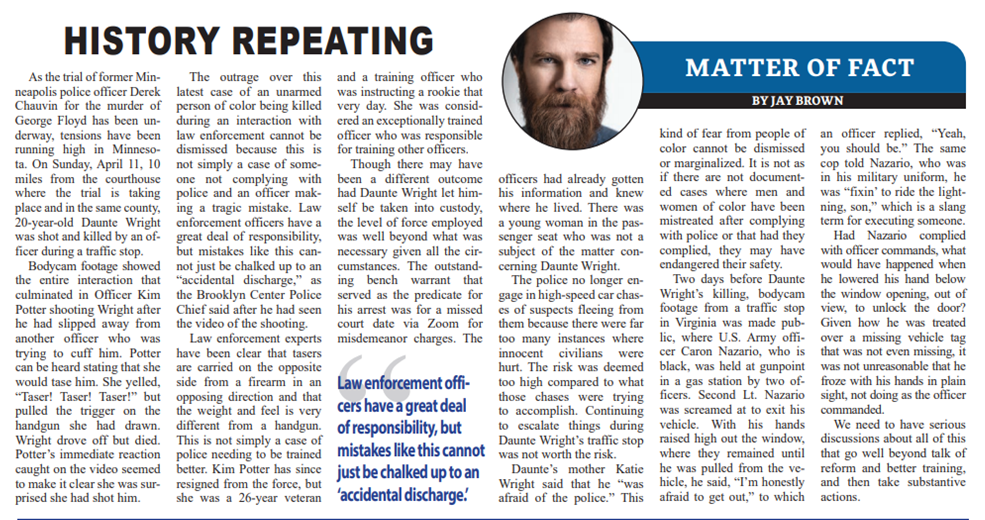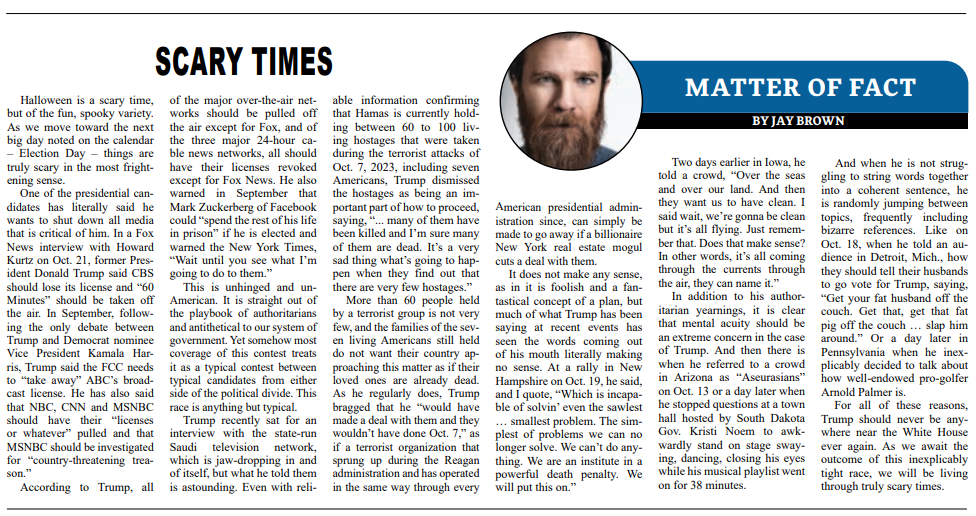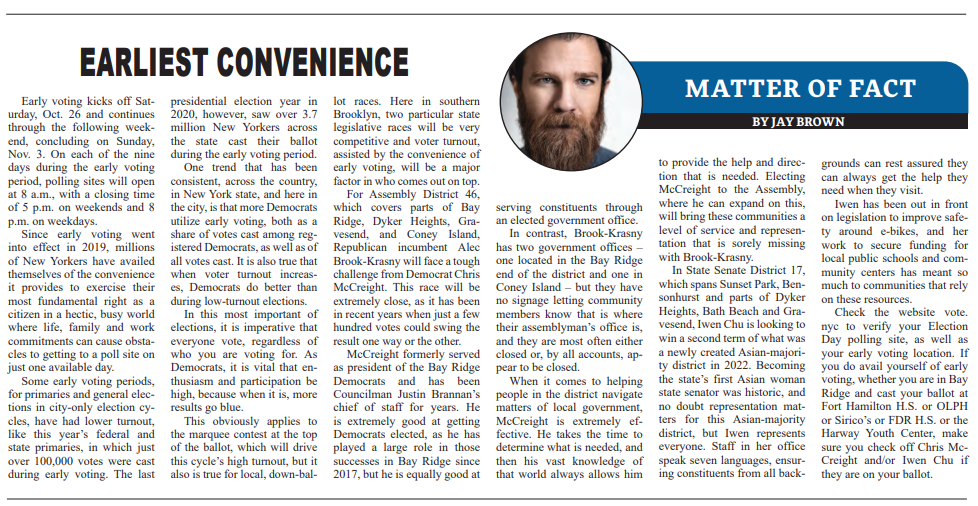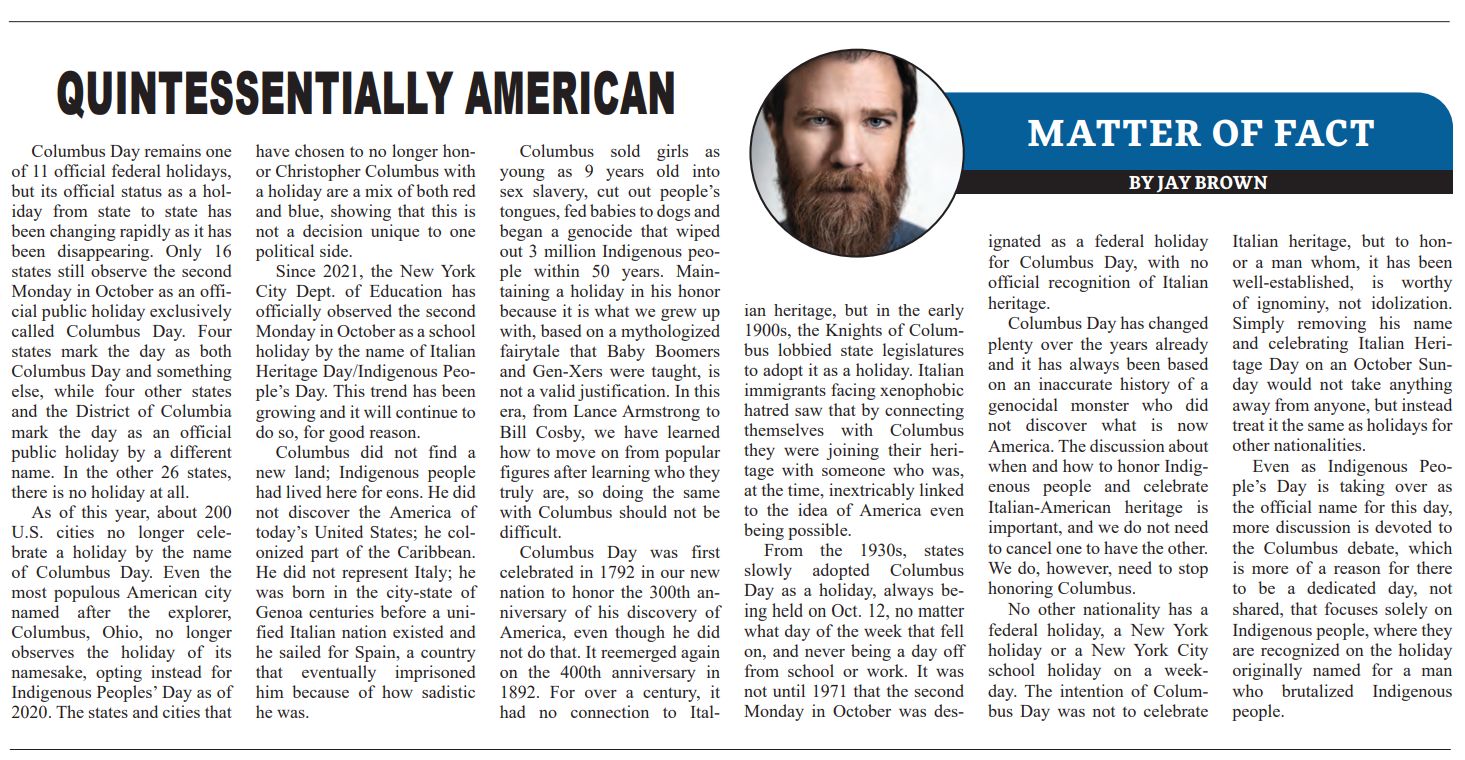This column, from the weekly opinion piece MATTER OF FACT, first appeared on BrooklynReporter.com, the Home Reporter and Spectator dated MONTH DAY, 2021
As the trial of former Minneapolis police officer Derek Chauvin for the murder of George Floyd has been underway, tensions have been running high in Minnesota. On Sunday, April 11, ten miles from the courthouse where the trial is taking place and in the same county, 20-year-old Daunte Wright was shot and killed by an officer during a traffic stop.
Bodycam footage showed the entire interaction that culminated in Officer Kim Potter shooting Wright after he had slipped away from another officer that was trying to cuff him. Potter can be heard stating that she would tase him. She yelled, “Taser! Taser! Taser!” but pulled the trigger on the handgun she had drawn. Wright drove off but died. Potter’s immediate reaction caught on the video seemed to make it clear she was surprised she had shot him.
The outrage over this latest case of an unarmed person of color being killed during an interaction with law enforcement cannot be dismissed because this is not simply a case of someone not complying with police and an officer making a tragic mistake. Law enforcement officers have a great deal of responsibility, but mistakes like this cannot just be chalked up to an “accidental discharge,” as the Brooklyn Center Police Chief said after he had seen the video of the shooting.
Law enforcement experts have been clear that tasers are carried on the opposite side from a firearm in an opposing direction and that the weight and feel is very different from a handgun. This is not simply a case of police needing to be trained better. Kim Potter has since resigned from the force, but she was a 26-year veteran and a training officer, who was instructing a rookie that very day. She was considered an exceptionally trained officer who was responsible for training other officers.
“Daunte’s mother Katie Wright said that he “was afraid of the police.” This kind of fear from people of color cannot be dismissed or marginalized.”
Though there may have been a different outcome had Daunte Wright let himself be taken into custody, the level of force employed was well beyond what was necessary given all the circumstances. The outstanding bench warrant that served as the predicate for his arrest was for a missed court date via Zoom for misdemeanor charges. The officers had already gotten his information and knew where he lived. There was a young woman in the passenger seat who was not a subject of the matter concerning Daunte Wright.
The police no longer engage in high-speed car chases of suspects fleeing from them because there were far too many instances where innocent civilians were hurt. The risk was deemed too high compared to what those chases were trying to accomplish. Continuing to escalate things during Daunte Wright’s traffic stop was not worth the risk.
Daunte’s mother Katie Wright said that he “was afraid of the police.” This kind of fear from people of color cannot be dismissed or marginalized. It is not as if there are not documented cases where men and women of color have been mistreated after complying with police or that had they complied, they may have endangered their safety.
Two days before Daunte Wright’s killing, bodycam footage from a traffic stop in Virginia was made public, where US Army officer Caron Nazario, who is black, was held at gunpoint in a gas station by two officers. Second Lieutenant Nazario was screamed at to exit his vehicle. With his hands raised high out the window, where they remained until he was pulled from the vehicle, he said, “I’m honestly afraid to get out,” to which an officer replied, “Yeah, you should be.” The same cop told Nazario, who was in his military uniform, he was “fixin’ to ride the lightning, son,” which is a slang term for executing someone.
Had Nazario complied with officer commands, what would have happened when he lowered his hand below the window opening, out of view, to unlock the door? Given how he was treated over a missing vehicle tag that was not even missing, it was not unreasonable that he froze with his hands in plain sight, not doing as the officer commanded.
We need to have serious discussions about all of this that go well beyond talk of reform and better training, and then take substantive actions.




